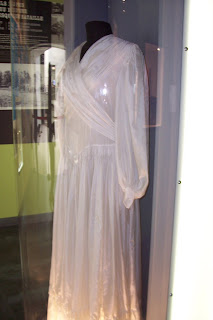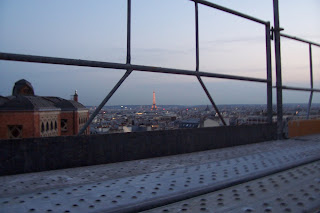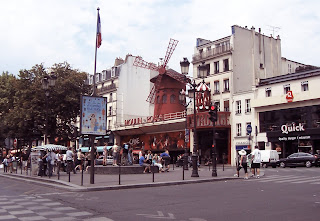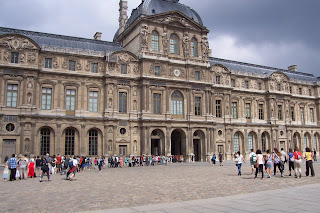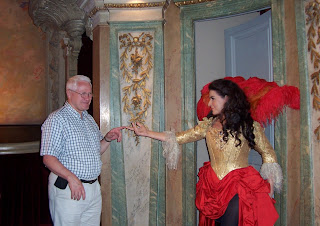We visited Mont Saint-Michel which is a castle/fortress/cathedral that was built in the English Channel. In modern days there has been a dyke built out to the island so that visitors can easily reach the castle.
This is one of our first views of the island as we were driving towards it.
It was originally known as Mont Tombe, which literally meant "tomb on a hill".
Legend has it that one night during the year 708, Bishop Aubert was visited by Saint Michael in a dream and was ordered to make the Mont into a shrine to him. Aubert, thinking his imagination had got the better of him, did nothing. The archangle grew impatient with him and, when he appeard for the third time, poked a hole in the disbelieving bishop's skull.
Aubert fulfilled the archangel's wishes and sent messenger to Monte Gargano in Italy. They brought back some sacred relics, including a piece of the red cloak worn by Saint Michael during one of his apparitions and a frangment of the altar where he had placed his foot.
As time went by, the rock became known as Mont Saint-Michel and Aubert sent a handful of men to live there and pray to God and his archangel.
Over the years the existing buildings emerged and became part of Mont Saint-Michel.

Shall we say crowded?
 Climbing the many, many stairs to the fortress
Climbing the many, many stairs to the fortress
Looking out over the English Channel

 Yep, we were there!
Yep, we were there! In the early 15th century the English decided to storm this stronghold (French) that had dared to stand up to them. Because the citadel, defended by its ramparts and protectged by the sea, was impregnable, they laid siege to it to starve it into surrender.
In the early 15th century the English decided to storm this stronghold (French) that had dared to stand up to them. Because the citadel, defended by its ramparts and protectged by the sea, was impregnable, they laid siege to it to starve it into surrender. The siege began in 1424 but an expedition of Breton noblemen setting off from St. Malo managed to disperse the English ships. This naval victory meant that the Mont could agian receive provisions by sea. The siege had failed and the citadel had not fallen.


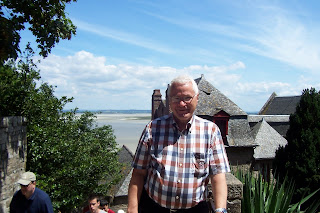



When we were there the tide was out. There were signs posted telling what time the tide was coming in and warning that the cars on the lower level of the parking lots had to be out of there before the tide came in or they would lose their cars. The tide in the bay where the rock stands is among the strongest in the world. The sea comes in over a dozen miles in the space of a few hours, as fast as a horse at full gallop. At times the sea travels under the sand, creating pockets of treacherous quicksand.







